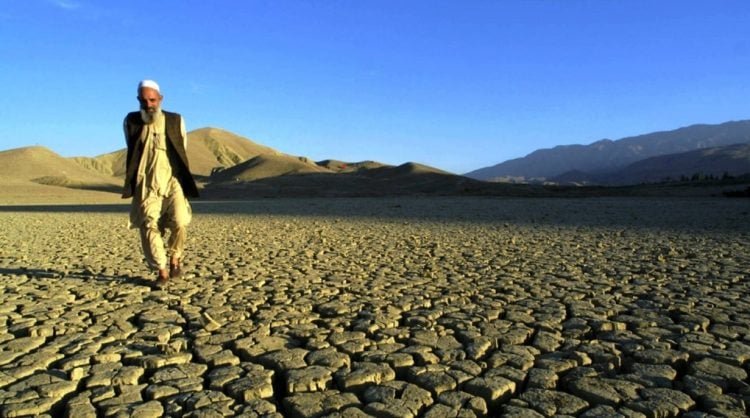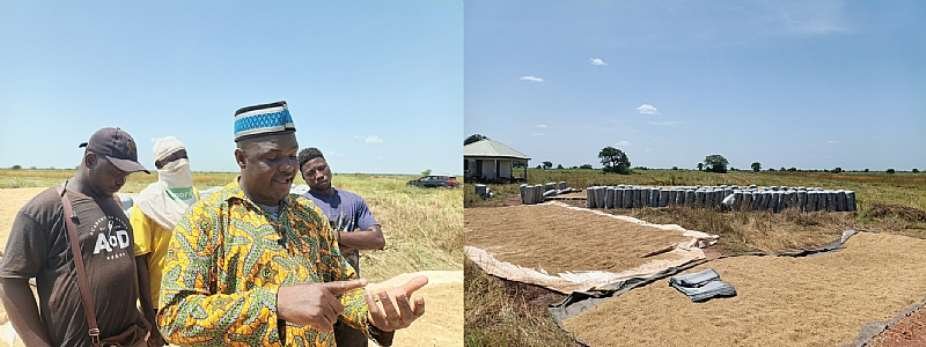Tags
Drought in Baghlan: Farmers Shift from Rice to Sorghum
Author: Avizha Khorshid

Some farmers in Baghlan province are complaining about low rainfall and the continuation of drought. They say this situation has severely reduced their crop yields and caused them heavy losses. At the same time, experts warn that the persistence of this phenomenon is posing serious challenges to Afghanistan’s agriculture-dependent economy, with consequences including poverty, unemployment, and a new wave of migration. Some farmers also report that, due to water shortages, they have shifted from rice cultivation to growing sorghum.
Several farmers told the Hasht-e Subh Daily that water scarcity and its consequences have drastically reduced their yields, and many have suffered significant losses.
Abdul Khaliq Miakhel, a farmer from the central district of Baghlan, says that the drought has sharply reduced their harvests. He adds that the water supply in Baghlan is limited, and they are forced to irrigate their fields in rotation. As a result, he says, crop yields have fallen dramatically, and some fields have produced nothing at all. He emphasizes that if this situation continues, they will be compelled either to migrate or move to urban areas.
Abdul Khaliq says that wheat, mung bean, and bean yields have declined due to water shortages, and rice paddies have been destroyed. Consequently, they have been forced to cultivate sorghum, which is more resistant to drought.
Miakhel adds, “If we had sufficient water, our yields would have been higher and of better quality. When we brought our crops to the market, we couldn’t even cover the costs of land and labor. We spent nearly 80,000 Afghanis on rice cultivation, but the crops failed.” He urges agricultural support organizations and the Taliban to construct dams or small water reservoirs to improve the situation for farmers.
Obaid Suleimankhel, another farmer in the district with experiences similar to Abdul Khaliq, says that the drought has affected not only his fields but most of the farmland in the area. He explains that due to water shortages and untimely rainfall, yields have dropped sharply, and farmers can barely meet the needs of their families, let alone supply the market. He adds: “The drought has severely affected wheat crops; because there was neither water nor rain, we couldn’t irrigate on time. As a result, we faced major problems with wheat production.”
This Baghlan farmer says: “We had cultivated about four jeribs (0.8 hectares) of land, with each jerib normally producing 910–980 kg of crops, but due to the drought, this amount has fallen to around 770–630 kg per jerib. In total, our crop production dropped from roughly 3,640–3,920 kg to 2,520–3,080 kg. This is only enough for our own consumption; it’s not sufficient to sell in the market. Even for our own use, it’s barely enough.”
Meanwhile, several experts emphasize the importance of rainwater storage and proper water management, warning that the continuation of this situation makes an agriculture-dependent economy vulnerable, exacerbates poverty and unemployment, and could trigger a fresh wave of migration.
Najibullah Sadid, an environmental expert, stresses the need for water storage and effective usage. He explains that Afghanistan experiences two types of drought: meteorological drought, caused by insufficient rainfall, and hydrological drought, where rainfall occurs but, due to the lack of storage infrastructure, water flows out of the country as floods, sometimes causing damage to people. He adds that compared to Iran, Afghanistan has 25 times less water storage capacity in dams, making it more vulnerable to drought than other countries.
The environmental expert elaborates: “The main focus for institutions, organizations, and farmers should be on developing water storage infrastructure because Afghanistan still receives rainfall even in dry years, albeit limited. Since most rainfall occurs in winter, when irrigation is not needed, this water should be stored for use during the agricultural season. The second focus should be on efficient water usage, such as modern irrigation systems, especially drip irrigation, to maximize water use effectively.”
Mohammad Suleimankhel, another environmental expert, says that drought is one of the phenomena causing the greatest harm to Afghanistan. He adds that, according to reports and technical findings, Afghanistan loses over $300 million annually due to drought alone.
This environmental specialist notes: “Afghanistan must adapt to its climatic conditions because we have no other option. We cannot fully implement climate change mitigation programs, as this requires significant resources and coordination with international organizations, both technically and financially, as well as in training, which is currently unavailable due to political issues. International organizations should not politicize climate change and drought, as this is a humanitarian issue.”
Qutbuddin Yaqubi, an economic expert, considers drought a serious threat to job and food security, stating that it disrupts the economic cycle and sectors reliant on agriculture.
He adds: “Drought paralyzes factories and industries, particularly those dependent on agricultural raw materials. The consequences include reduced food security and increased reliance on imports. Ultimately, this situation leads to higher poverty and unemployment, along with waves of migration and social problems. A comprehensive national and global strategy to combat drought is essential. Locally, promoting the cultivation of drought-resistant crops can mitigate the impact of drought.”
Drought in a country like Afghanistan, where the economy heavily depends on agriculture, has multiple adverse consequences. It threatens the food and job security of millions, cripples industries reliant on agricultural raw materials, and leads to increased poverty, unemployment, and a fresh wave of migration.
Meanwhile, the UN Food and Agriculture Organization (FAO) has warned that the damage caused by drought has spread to 19 provinces in Afghanistan, with the northern regions most affected. According to the organization, crop losses, drying pastures, and disappearing water sources have pushed rural communities to the brink of collapse.
https://8am.media/eng/drought-in-baghlan-farmers-shift-from-rice-to-sorghum/Published Date: September 10, 2025






